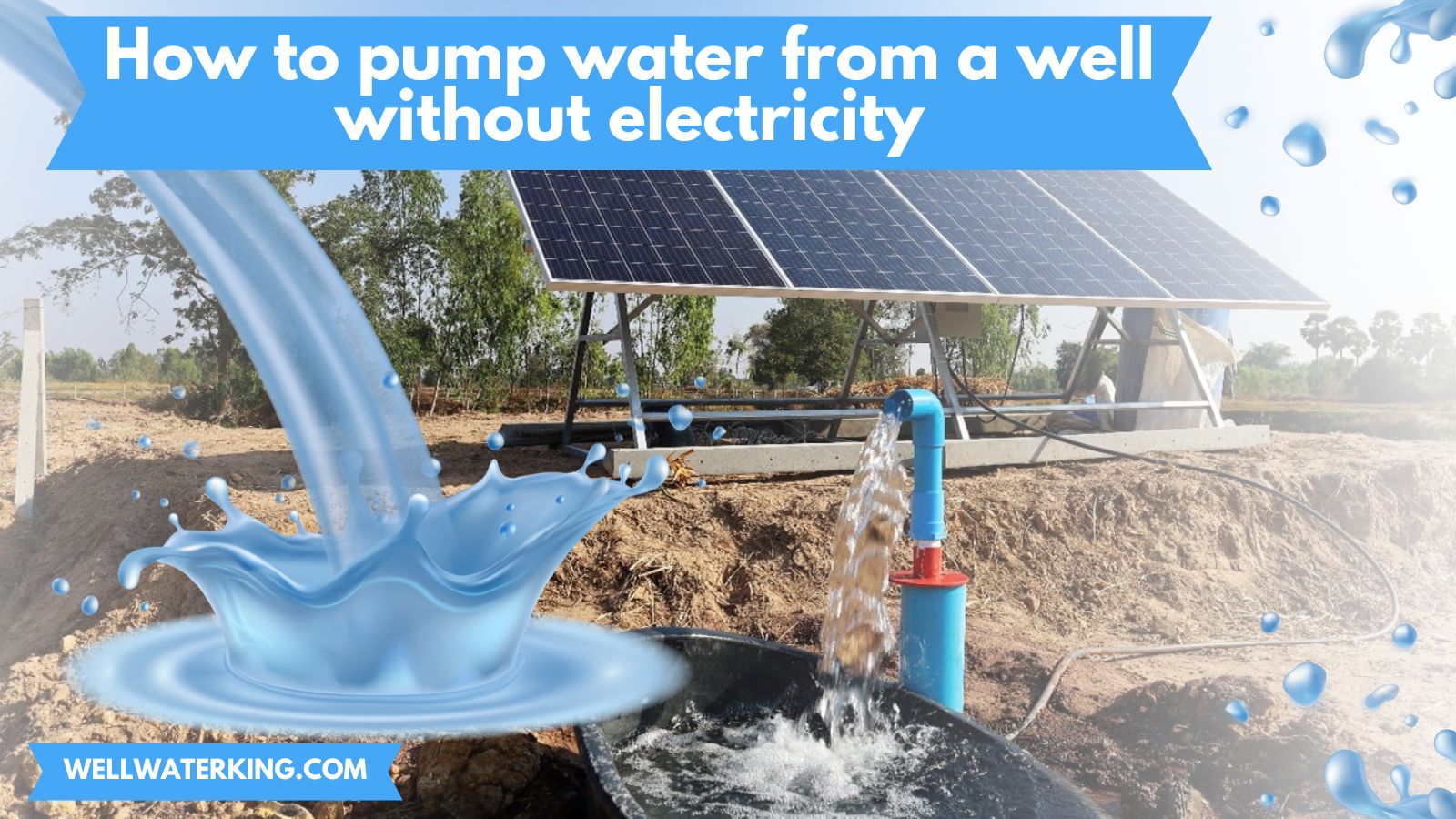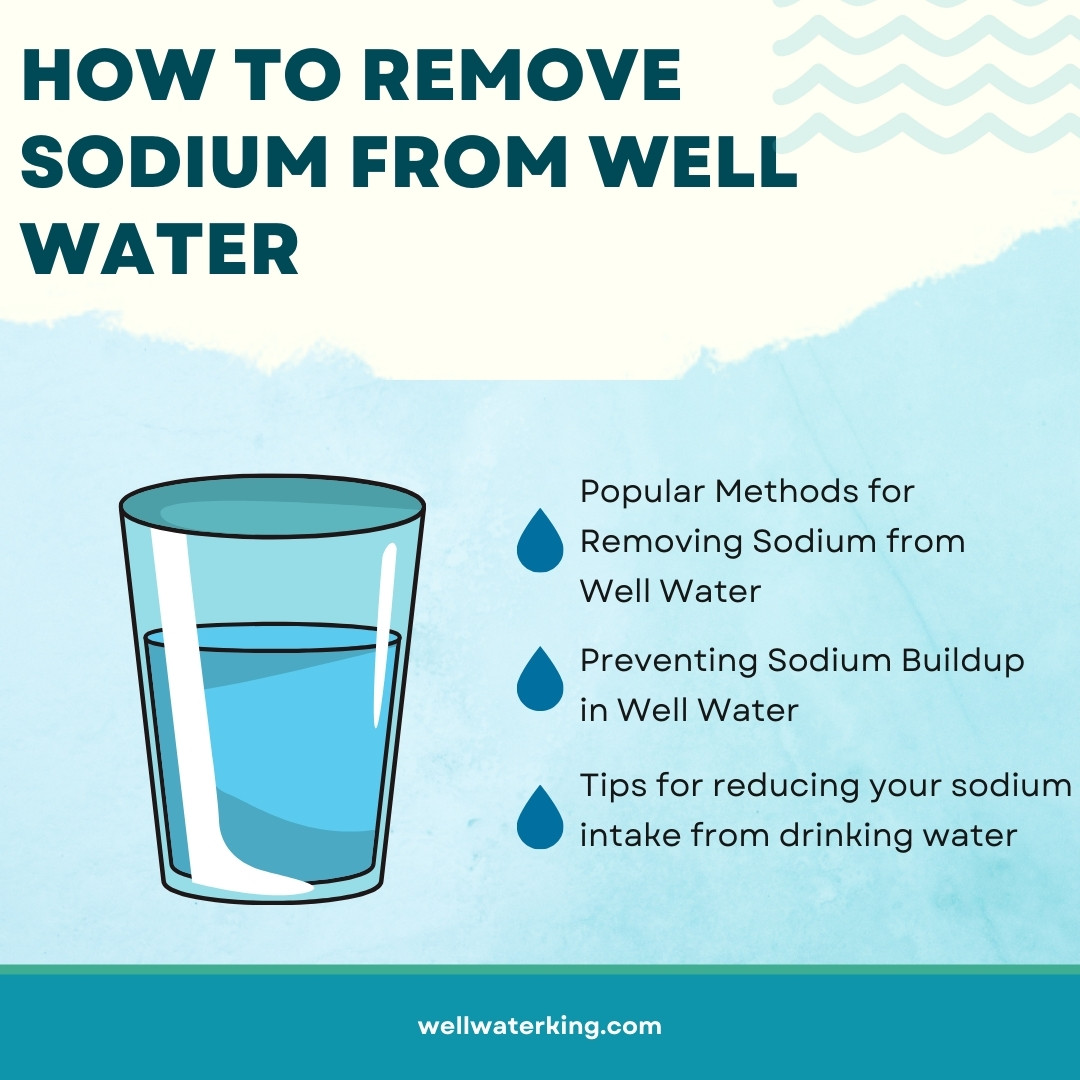Whether you live off the grid or are preparing for an emergency scenario, having access to water is critical for survival. If the power goes out for an extended period, how will you get water from your well without electricity? It’s an important question to consider. Fortunately, there are several effective methods to draw water manually from a well or borehole.
Is there a way to pump water without electricity?
In this post, we’ll explore the best techniques for water extraction when the grid is down. You’ll learn how to build and install a simple hand pump, leverage hydraulics with a ram pump, or even use gravity and muscle power with a rope and bucket. With some clever low-tech solutions, you can successfully generate water from your well.
We’ll also look at some solar-powered pumping options for those who want a modern, renewable approach. Follow along as we dive into the methods, tools, and tips you’ll need to start pumping water sans electricity. The knowledge you gain could prove invaluable during a prolonged blackout or off-grid living situation. With a bit of planning and the right equipment, you can tap into your well’s precious water source with or without power.
Popular Ways to Get Access to Well Water Without Electricity
In an era dominated by electricity, it’s intriguing to ponder how one would draw water from a well without it. Whether you’re in a location untouched by power lines or prepping for potential outages, understanding the art of non-electric water retrieval can be essential.
There are several clever and effective methods to draw water from a well without electricity. From hand pumps to hydraulic rams, generators to solar-powered systems, here are some popular options for accessing well water off the grid.
Well or Sleeve Bucket: A Glimpse into Simplicity and Efficiency
At its core, the sleeve bucket is a testament to how sometimes the simplest solutions can be the most effective. Widely recognized as one of the most cost-effective methods to draw water from a well without electricity, the sleeve bucket, also referred to as torpedo or cylinder bucket, has been a reliable choice for many. The modern-day version of this tool is designed as a slender bucket, perfect for descending into the tight confines of a well casing and fetching water.
Well buckets are usually made of galvanized steel and can hold up to 2 gallons of water. High quality well buckets will have a discharge device at the bottom that allows you to conveniently empty the water without having to invert the bucket. While convenient, well buckets do have some downsides. They can only draw water from relatively shallow wells, up to around 30 feet deep. The process is also very labor intensive, requiring physical strength and effort to raise and lower the filled bucket repeatedly for the volume of water needed.
However, before you dive into using a well bucket, there’s a catch to be aware of. If you already have a submersible pump in place, it needs to be removed to provide access for the sleeve bucket. While this process is relatively straightforward for most pump models, it’s undoubtedly an added step. But remember, if you have a hand pump already installed, this isn’t a concern.
Hand Pump
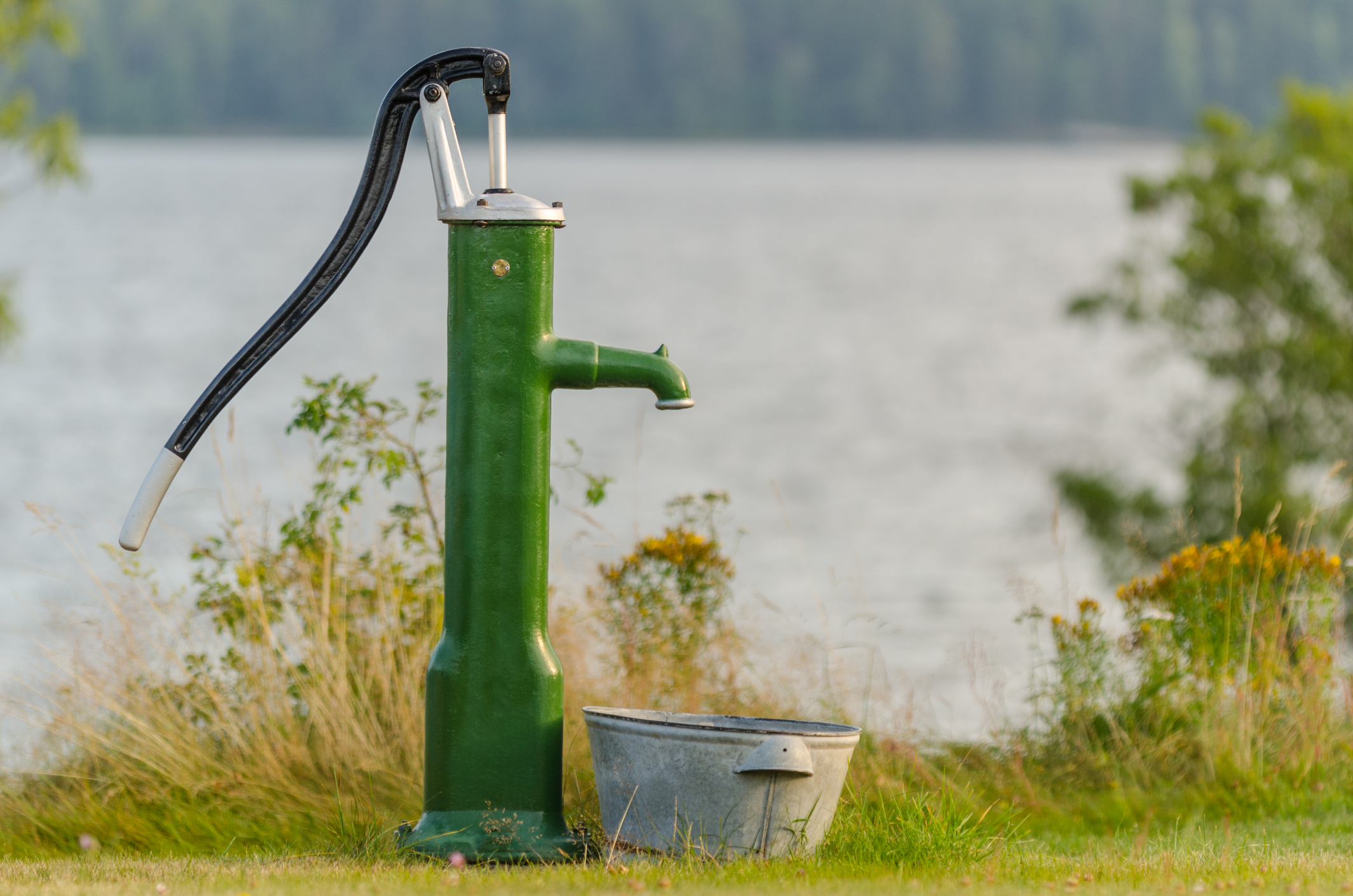
The classic hand pump is one of the simplest and most reliable ways to manually draw water from a well. Hand pumps operate by using lever action to generate suction that lifts water up from the well through the rising main pipe. Hand pumps are relatively simple to install and maintain, making them a popular choice in rural areas.
Hand pumps can be installed on bored, drilled, or tube wells. They provide a consistent supply of water, even during power outages or when electricity is not available. They provide access to water offline at depths of up to 100 ft.
Generator
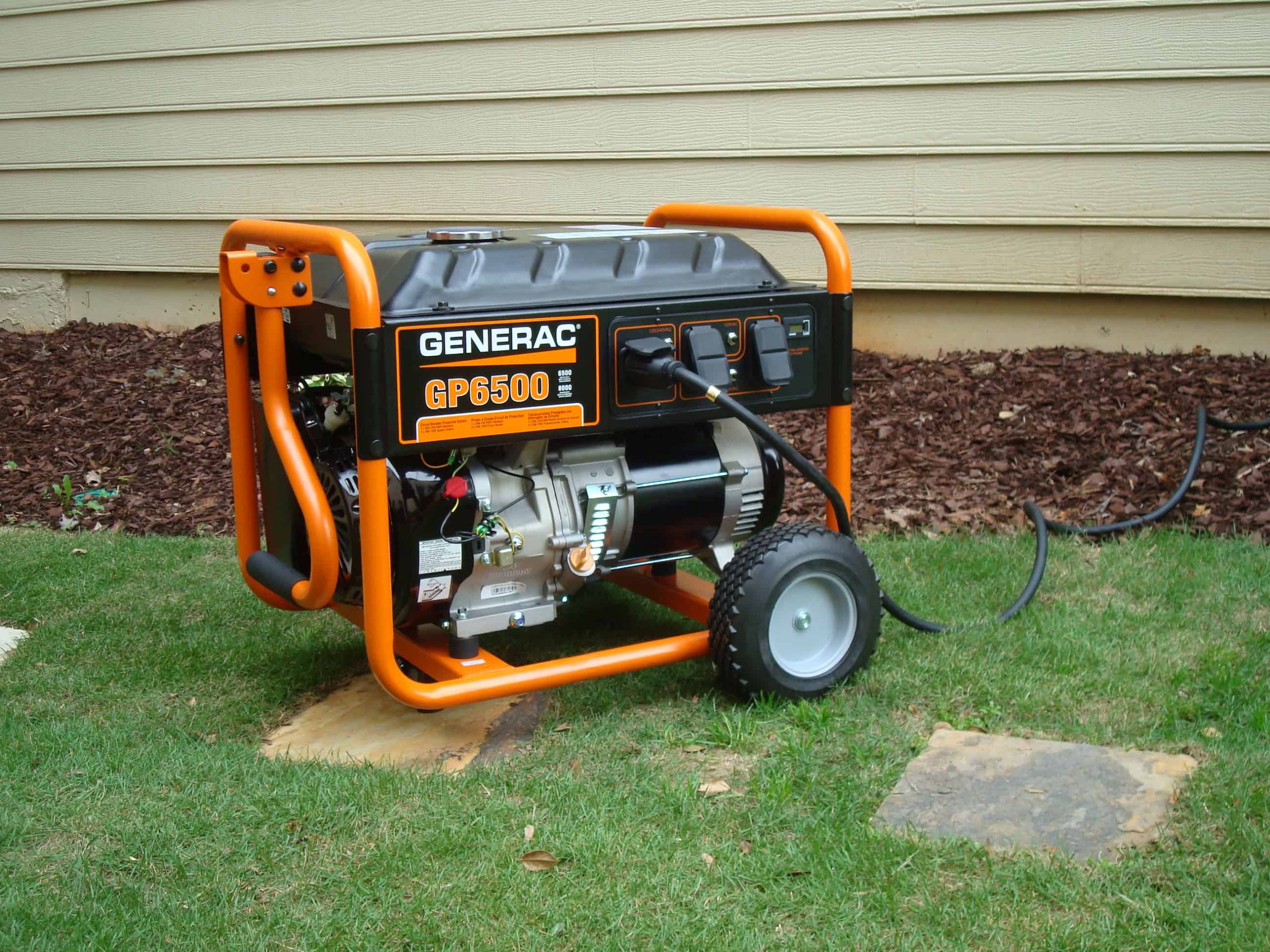
In situations where electricity is temporarily unavailable, a generator can be used to power an electric pump. Generators convert fuel, such as gasoline or diesel, into electricity, which can then be used to operate the pump.
Generators must be sized properly to handle the electric load. Safely connecting the generator to your pump wiring through a transfer switch is critical. While generators can provide a temporary solution, they require a constant supply of fuel and can be noisy and expensive to operate.
Solar Pump
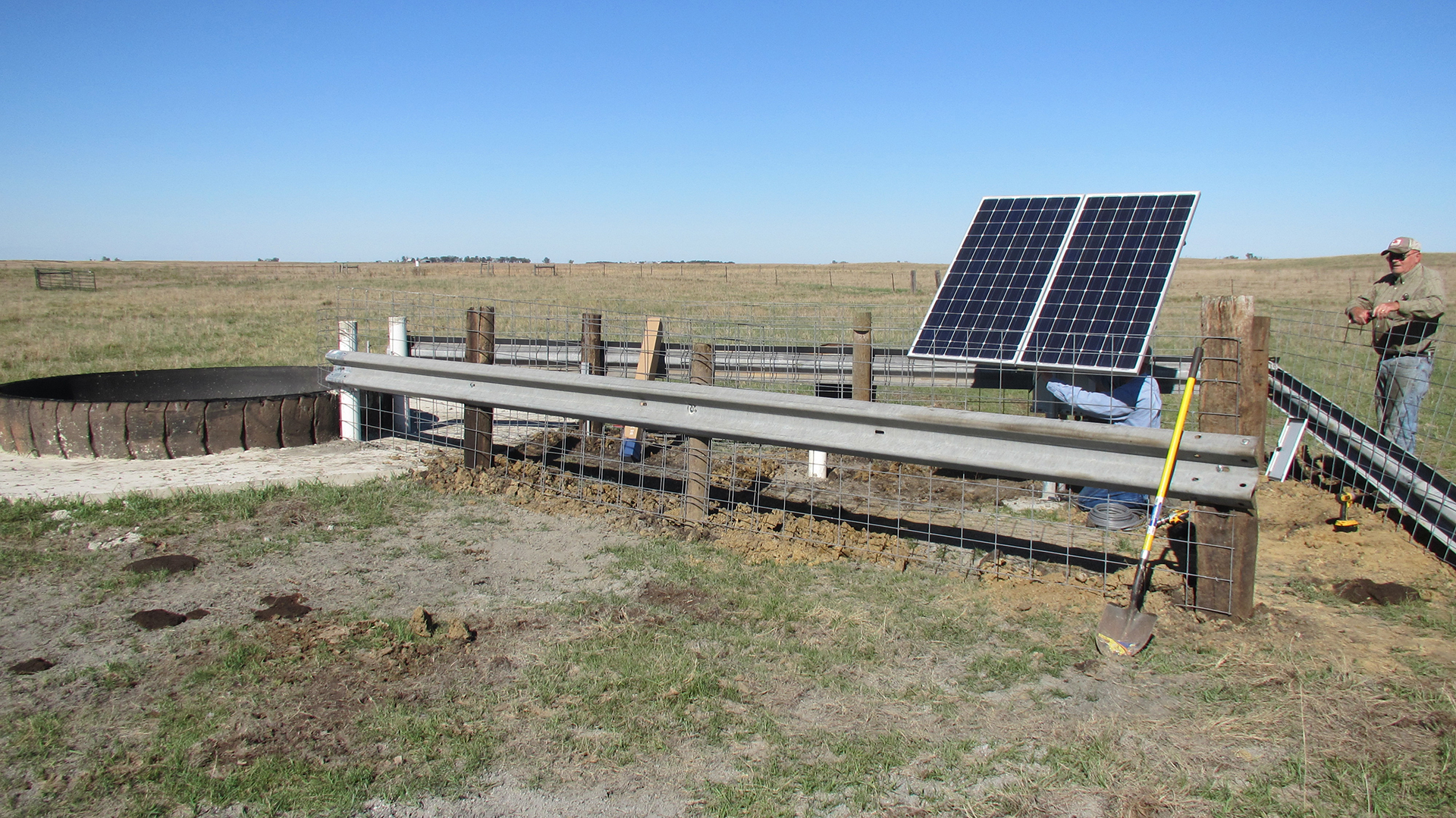
Harnessing the power of the sun, solar pumps use photovoltaic panels to convert sunlight into energy, driving a pump to bring water to the surface.
They collect energy during daylight hours in batteries to provide power when needed. Solar pumps eliminate fuel costs and carbon emissions. Setup has high upfront costs but provides reliable water access with sufficient sun.
They’re eco-friendly and reduce recurring costs, but their efficiency can be impacted on cloudy days.
Wind-Powered Pump

Wind turbines, while an innovative solution for water pumping, may not always offer consistent service, especially if the wind proves to be fickle. To counteract this unpredictability, it’s advisable to pump water into a storage or holding tank when the wind is favorable. This way, even when the wind dies down, you can rely on gravity to transport the stored water to your home.
A significant advantage of wind turbines is their compatibility with other renewable energy sources. Many residential wind turbines can be integrated with solar panels, giving you a hybrid power system. This combination ensures that even on less windy days, if the sun is shining, you can still harness energy. Curious about how wind and solar can work in tandem? Dive deeper into hybrid wind and solar systems.
Indeed, the initial investment for a high-quality wind turbine might seem steep, usually amounting to a few hundred dollars. However, the silver lining is that once set up, the operational and maintenance costs are minimal.
High Lifter Or Hydraulic Ram Pump
High lifters or hydraulic ram pumps use the force of flowing water to pump water from a well. These pumps operate based on the principle of water hammer, where the momentum of flowing water is used to create pressure and lift water to a higher elevation. High lifters are energy-efficient and can be an excellent option for areas with a reliable source of flowing water. Setup is complex but they can effectively pump water from 30+ ft depths.
Summary
While we often rely on electric pumps to easily draw water from wells, there are several effective methods to access well water without grid power or even electricity at all. As we’ve discussed, hand pumps, hydraulic ram systems, gravity buckets, and manual piston pumps allow water to be pumped by hand power alone – no fuel or electricity required. For those looking for more modern solutions, solar-powered pumps and generators can provide the electricity to run pumps when the grid is down.
The right manual pumping solution depends on the depth and output needs for your well. But with some clever low-tech techniques, pumping water without power is certainly achievable. Installing a hand pump or hydraulic ram system ahead of time provides preparedness for power outages.With any of these methods, plus sound water storage and conservation strategies, you can successfully access precious water from your well even in off-grid situations.
The ability to draw water without electricity provides peace of mind and greater resilience. We hope this overview gives you insights into the possibilities for maintaining your water supply without the grid. With knowledge of these techniques, you’ll be equipped to pump water manually through power outages or if living entirely off the electric grid.
FAQ
Can you manually pump water from well?
Yes, you can manually pump water from a well using a hand pump or a well or sleeve bucket.
What is free energy water pump?
The term “free energy water pump” is a bit of a misnomer, as there’s no true “free” energy. However, the phrase often refers to water pumps powered by renewable energy sources, like solar or wind power, which don’t have recurring fuel costs once set up. Some might also associate “free energy” with methods like the hydraulic ram pump, which uses the kinetic energy of flowing water to pump a portion of that water to a higher elevation without any external power source.
Can you pump water uphill without electricity?
Yes, water can be pumped uphill without electricity through the use of hydraulic ram pumps. A hydraulic ram pump uses gravity flow of water and valve action to pump a portion of the water to an elevation above the pump. No external energy source is required beyond the water flow.

